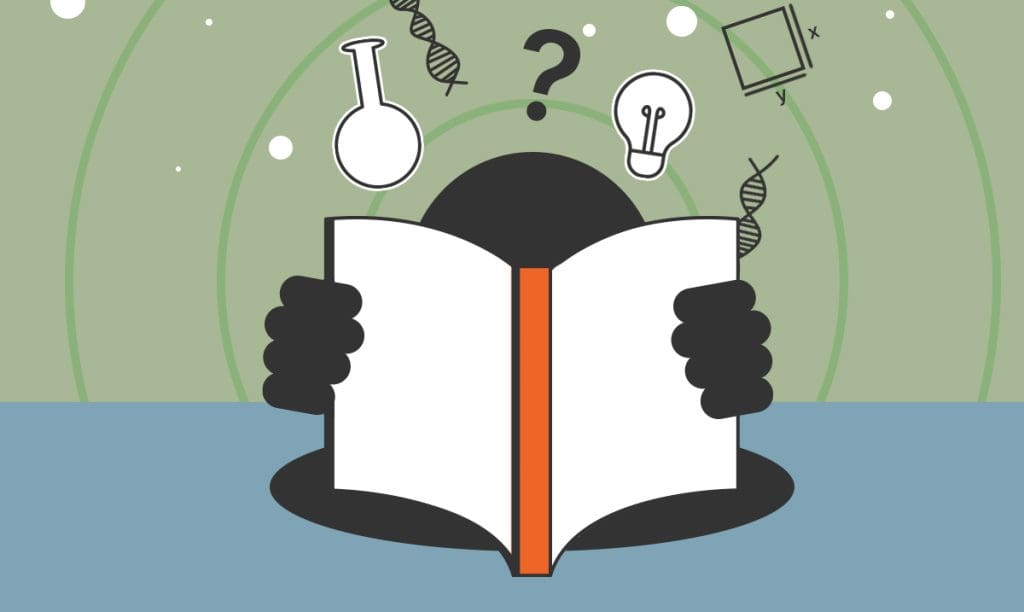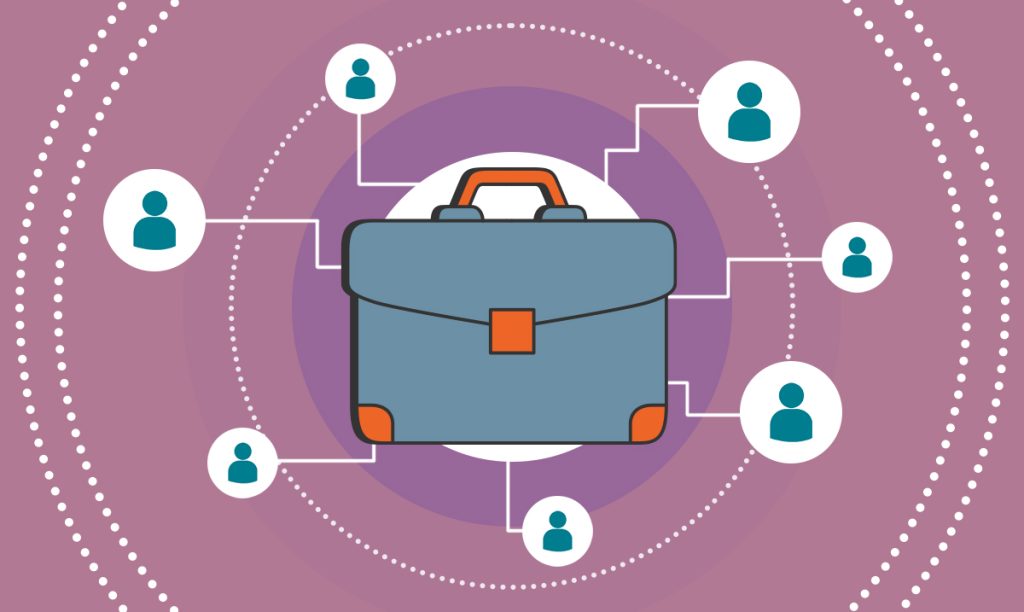What to do if you’re itching to start a business, but that perfect idea just doesn’t come to mind? Luckily for you, we have an answer (or rather ...
The Importance of Continuous Learning and Adaptation in Business
Written by: Carolyn Young
Carolyn Young is a business writer who focuses on entrepreneurial concepts and the business formation. She has over 25 years of experience in business roles, and has authored several entrepreneurship textbooks.
Published on July 30, 2024

Nowadays, when the business landscape is evolving on a daily basis, the ability to continuously learn and adapt is not just an advantage — it’s a necessity. As industries transform and new technologies emerge, businesses must stay agile to remain competitive. To gain insights into how continuous learning and adaptation drive success, we consulted with several seasoned entrepreneurs who shared their invaluable experiences and strategies. Let’s learn!
Taking Online Courses
I would say continuous learning and the ability to adapt are essential for long-term success in any industry. Continuous learning and adaptation mean your business will remain nimble enough to adapt to changing industry norms and standards and can keep you competitive even in the face of rapid technological improvements and change. Personally, I like to take courses through popular online course platforms like Coursera — really, anything remotely related to my business or career field, or anything that catches my interest, is valuable for me to take.
David Kemmerer, co-founder & CEO of CoinLedger
Leveraging Industry News and Online Platforms
Every industry evolves, and these days, there is more competition than ever for businesses. So, businesses that don’t commit themselves to learning and adapting can find themselves falling behind the curve — unable to catch up. It’s wise to stay updated with industry newsletters and online sources to learn quickly and efficiently. Even simply paying attention to what’s being talked about on sites like LinkedIn can help.
Carter Seuthe, CEO of Credit Summit Consolidation
Adapting to Customer’s Needs
Customers today aren’t the same as those from three years ago or even five years ago. That rapid change in a marketplace requires adaptability. Today’s customer interactions use different language than before, including new norms in conversational topics. Five years ago, you might have never heard a casual political conversation when matching with a customer. However, today, this is a normal occurrence, and it’s important that teams understand how to be respectful and engaging to meet customer expectations.
Similarly, customers are more demanding regarding business trends. They expect an interactive shopping experience with customized product recommendations. To provide this experience, business leaders need to leverage automation and AI tools, which are plentiful and complex. Being willing to learn these new tools and systems ensures a company can meet customer demand and continue to perform well.
Brooke Webber, CXO at AllCrystal.com
Developing Self-Awareness
The No. 1 skill I have developed was to create the habit of self-observing and self-awareness.
There are three questions that I ask myself frequently to get clarity:
1. Who do I need to be right now to achieve my next goal?
The answer to this question helps me to connect with the vision I want to create.
2. What do I need to deconstruct so I can adapt to this new vision?
Here, important things will pop up, like limiting beliefs, negative emotions, or more practical actions that I need to take, such as dismissing one or more members of my team.
3. Who has already what I am looking for?
In this manner, I can find the right mentors to support me in achieving my vision and goals. They will give me shortcuts, and the process of learning is never stopping.
Florentina Gionea, spiritual mentor for leaders
Engaging with Your Network
I believe continuous learning and adaptation are crucial in business because they are the engines of innovation and competitiveness. Businesses that prioritize learning and adaptation are more likely to thrive in the face of challenges and seize opportunities.
One of the most effective ways to learn is through the exchange of ideas and experiences with peers, mentors, and industry leaders. This network serves as a dynamic learning resource, offering diverse perspectives and insights that are not readily available through traditional learning channels. By actively engaging with my network — whether through industry conferences, online forums, or informal meet-ups — I can stay informed about the latest trends, challenges, and innovations in the legal funding industry.
Jared Stern, managing member at Uplift Legal Funding
Embracing Diverse Learning Methods
We fail to meet our full potential when we stop learning and challenging ourselves. Ignoring development at both the individual and collective levels sets your people up for failure and stagnation. Adaptation and learning allow us to broaden our perspectives by learning new ways of doing and thinking, which inevitably helps us make better decisions and improve our work quality. Continuous learning needs to hinge on variety so it’s more universally accessible for people of all learning preferences or needs while preventing learning boredom and burnout. Mix it up with stretch projects, on-the-job training, eLearning, mentorships, reverse mentorships, coaching, and more. Test out every learning medium you have at your disposal.
Hardy Desai, founder of Supple
Using Data to Back Your Efforts to Keep Learning
Like many businesses operating in the tech and digital space, our industry relies heavily on the latest algorithms and digital trends. Things change fast in this field, and If we don’t engage in continuous learning, we simply won’t be able to keep up. But we also don’t just learn for the sake of learning. Everything we learn gets evaluated for how it can improve our strategies, enhance our services, and deliver better results for our clients. Quite simply, staying relevant in our industry means staying informed — and the best way we can do that is to instill a culture of continuous learning within our organization.
Continuous learning is only effective when it actually contributes to what you’re currently doing. Otherwise, it might just serve to overwhelm you. For this reason, we always look at the data we have and use that to figure out where we need to brush up our skills or learn new things. This way, we’re always updating our strategies to make sure we’re able to do the best job we can for our clients.
Victor Karpenko, founder & CEO of SeoProfy
Viewing Tutorials
Continuous learning and adaptation are very important in business. Because I am a virtual person, my go-to technique to keep learning is viewing tutorials.
I utilize several platforms, one being YouTube. I usually watch tutorials a few times until I feel comfortable attempting to execute.
And then, when I execute, not only do I feel empowered, but I feel as if I’m now the professor, and I’m willing to teach others.
Gwendolyn Cody-Davis, transformational coach
Learning on Your Own
The learner initiates self-directed learning, which can be formal and employee-controlled. A new recruit may have the flexibility to traverse a team’s onboarding process, but they must still cover all the essentials before proceeding.
Employees who actively seek to gain new skills engage in informal self-directed learning. This generally entails consulting mentors, coworkers, organizational expertise, and third-party resources and can lead to organized learning opportunities.
Mark McShane, marketing director of Boiler Cover UK
Following Industry Leaders
I believe that learning is a process that does not end as soon as you graduate. The more you learn, the more you know, and the more you know, the more you have an advantage, especially in business.
Trends are continuously emerging, especially in the field of business and entrepreneurship. If you do not make an effort to keep up with the latest tools and software and equip yourself with the knowledge needed to survive this fast-paced world, then soon enough, your business will go under even if you are in the lead now.
One of my go-to techniques to keep learning (aside from researching) is following leading personalities in the industry I specialize in. Since they are considered to be industry leaders, the thoughts they share are a gold mine of ideas, which I can later nurture and grow.
Once they mention something unfamiliar, I make sure not to waste time and bury myself in research until I fully understand what’s new (e.g., the current trend) and how to cope with whatever change is happening.
Kolyanne P. SK, founder of Pinch of Attitude
Integrating Continuous Learning into Performance Management
Continuous learning matters because what customers want isn’t static; it changes and evolves over the days, years, and months. So even if what you’re doing now works well and serves your customers, continuous learning ensures that as their needs and industry standards change, you continue to meet them. You want to become one of the companies ushering in even better products, services, and strategies rather than being forced to adapt or get left behind.
Continuous learning should start and end with great performance management. Regular conversations with your employees about their performance and how to better support them are a great jumping-off point and regular check-in point for discussing a game plan for continuous learning and development.
Robert Kaskel, chief people officer at Checkr
Overcoming Roadblocks
It’s impossible to innovate if you aren’t exposed to new concepts, skills, technologies, and ways of thinking. With continuous learning, you understand that knowledge isn’t a goal post you meet but a journey along an unending path — you simply pick up more information and keep moving. The biggest roadblocks to continuous learning are a lack of time and managerial involvement. When you take the time to develop plans with your employees, you both buy into the process and set people up with enough support for success.
David Ciccarelli, CEO of Lake
Utilizing Reading as a Key Strategy for Learning
Continuous learning and adaptation are important not only in business but also in life. The world is changing more each day than we have seen in previous transformations, and in order to stay up to date, you have to be willing to learn. My go-to technique for learning is reading, whether that be articles, white papers, or books. I like to stay up to date on current start-up news by subscribing to newsletters and diving into the content when they are delivered. This is a good way to have someone else do the leg work of determining the most interesting topics, but I recommend subscribing to several with different viewpoints to ensure you get a good swath of information. Reading books is always a good way to stay up to date on the latest management trends or growth methods. White papers are a good way to dive deeper into more complicated topics like generative AI, edge computing, or sustainable investing. Reading should always be in your arsenal, even if you use audio to consume the content.
Katrina Purcell, founder & CEO of Katrina Purcell LLC
Using Feedly
My go-to technique for continuous learning is utilizing Feedly. I use it every day to monitor competitors and industry trends.
Feedly is a comprehensive platform that aggregates newsletters, blogs, and websites. This tool has been instrumental in keeping me informed about the latest in design, product development, and technology by prioritizing content from leading publishers and SEO authorities like NYT Open, FT Product & Technology, and Ahrefs.
I learned the significance of content recency and the incorporation of anecdotal stories to signal to Google that my content is genuinely created by humans. Therefore, I’ve made it a point to update our most popular articles with at least one anecdotal story. This has significantly improved our SEO performance amidst the challenges posed by AI-generated content.
While some of my competitors who run gadget websites have suffered a traffic loss of as high as 50%, I managed to minimise my loss to within 10% in the latest Google update.
Billy Chan, founder & chief editor at DroneLast
Embracing Vulnerability
In my journey, continuous learning and adaptation in business have been pivotal, especially when navigating the unpredictable and often tumultuous waters of life and career. Embracing vulnerability as a strength is an approach that became particularly significant as I grapple with PTSD. It taught me resilience, not just in a personal context but in how I approach business challenges.
Through this, I’ve learned that vulnerability can lead to profound growth and innovation. In creating ArtDNA®, I channeled my experiences — both the struggles and the triumphs — into understanding the deeper emotional connection people have with art. This wasn’t just about adapting to new technologies or market trends; it was about adjusting to life’s deeper undercurrents and using them to fuel creativity and empathy in my work.
Embracing vulnerability in continuous learning has allowed me to pivot effectively at crucial junctures and turn potential setbacks into opportunities for growth. It has been a journey of transforming personal challenges into professional strengths. It made me more adaptable, empathetic, and innovative in the business of art.
Michele LaRocco, founder of ArtDNA® technology
Embracing Adaptability
If you can’t adapt, someone else will. That’s why developing the habit of adaptability and continuous learning is important. It keeps you on top of your game in whatever field you’re in and boosts your confidence. Personally, I experiment with several hobbies time after time. This way, not only am I opening myself to evolve, but I’m also trying new activities. I am building a strong mindset and learning more about different activities. It also helps a lot in the overall journey.
Len Gauger, owner of Connect Space
Subscribe to Our Newsletter
and gain insider access to cutting-edge business insights and trends.
Featured Resources

I Want to Start a Business But Have No Ideas
Published on August 7, 2024
Read Now

Customer Relationship Management Best Practices
Published on July 30, 2024
Customer relationship management (CRM) is no longer just a transactional process. Now, it’s a must for any business looking to thrive in thiscusto ...
Read Now

Funding Solutions for Small Businesses
Published on July 30, 2024
Starting a small business is more than just a dream; it’s a bold leap into innovation, passion, and resilience. Yet, one of the most dauntingchall ...
Read Now
Comments